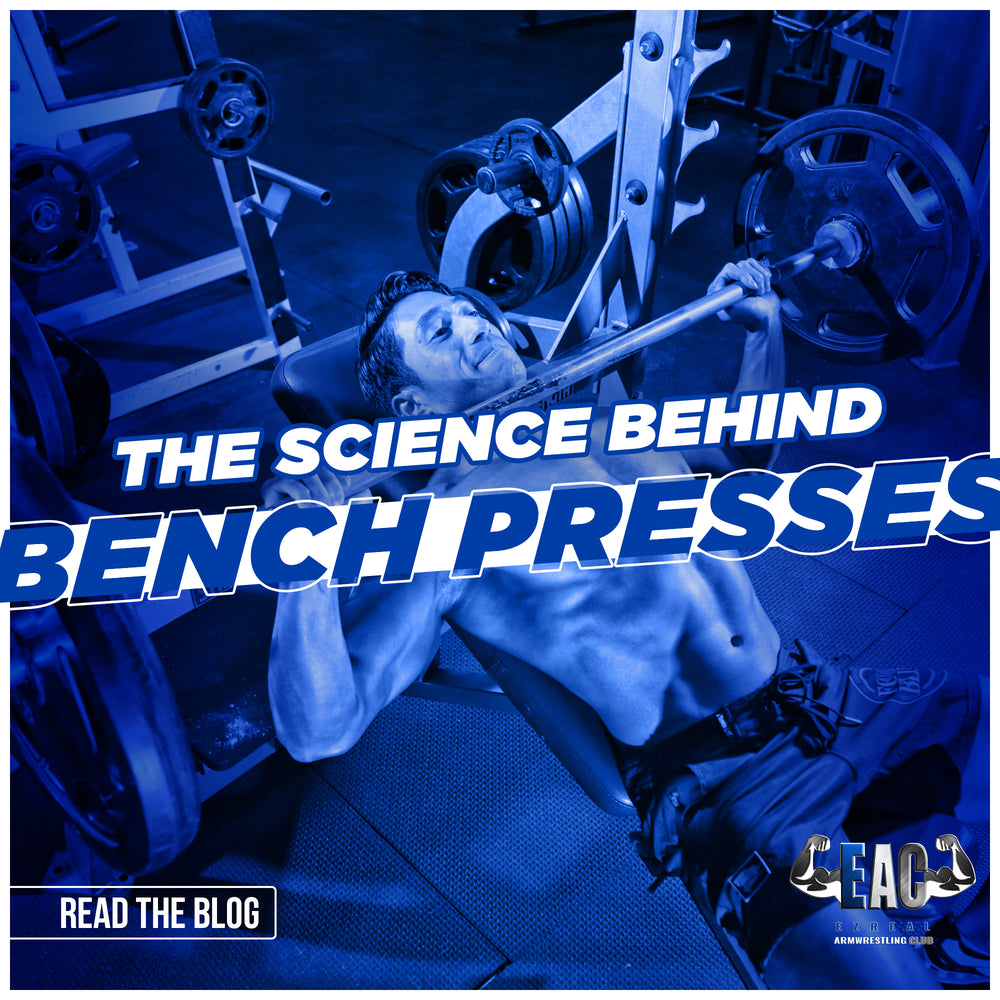
The Science Behind Bench Presses
The Science of Bench Press: Muscles Worked and Biomechanics Explained
The bench press is a fundamental exercise in strength training that targets multiple muscle groups in the upper body. Its simplicity belies the intricate interplay of muscles and biomechanics.
In this examination, we explore the science of the bench press, comprehending the muscles utilized and the complex biomechanics behind this impactful exercise.
Muscles Engaged in Bench Press
1. Pectoralis Major
The main muscle targeted in the bench press is the pectoralis major. This large muscle spans the chest and has two parts: the sternal head, which develops the lower chest, and the clavicular head, which contributes to upper chest development.

2. Deltoids (Shoulders)
The front fibers of the deltoid muscles are vital for the bench press. They help with shoulder flexion and adduction, contributing to the upward motion of the barbell.

3. Triceps Brachii
The triceps brachii, positioned at the rear of the upper arm, play a critical role in straightening the elbow joint during the extension phase of the bench press.

4. Serratus Anterior
The serratus anterior, positioned on the sides of the chest, aids in stabilizing the shoulder blades during the bench press. This muscle is essential for maintaining correct form and preventing shoulder injuries.

5. Latissimus Dorsi
Despite not being the primary muscle, the latissimus dorsi (or lats) aid in stabilizing the shoulder blades. This engagement promotes a strong and controlled movement during the exercise.

Biomechanics of the Bench Press
1. Shoulder and Elbow Joints
The bench press engages both the shoulder and elbow joints. During the descent, the shoulder joint flexes and the elbow joint extends. In the ascent, the shoulder joint extends and the elbow joint flexes. This movement activates the muscles and enhances force generation.
2. Bar Path and Range of Motion
Optimal bar path in bench press: diagonal line from above chest to above midline of chest. Maximizes muscle engagement, minimizes shoulder joint stress. Full range of motion, bar lightly touches chest for maximal muscle activation.
3. Grip Width and Hand Position
The grip width in the bench press impacts muscle engagement. A broader grip highlights the chest muscles, while a narrower grip focuses more on the triceps. Hand position affects the distribution of load on the shoulders and chest.
4. Foot Placement and Leg Drive
The correct positioning of the feet is essential for stability and power. By keeping the feet flat on the ground, a strong foundation is established, enabling the legs to generate force. Pushing through the feet initiates leg drive, which aids in lifting heavier weights.
5. Barbell Control and Stability
To achieve optimal muscle engagement and prevent injuries, it is crucial to maintain control of the barbell during your workout. Properly stabilizing the barbell and performing a controlled descent and ascent will enhance the biomechanics of the bench press.

Conclusion
Understanding the science behind the bench press improves your ability to perform the exercise effectively and safely. Multiple muscle groups and biomechanics contribute to the overall effectiveness of this strength-building movement.
By following the muscles worked and biomechanical principles outlined here, you can target specific muscle groups and minimize the risk of injuries, ensuring a rewarding and productive bench press experience.


